AirPods Pro vs Beats Powerbeats Pro: Apple’s true wireless earbuds do battle
Which Apple earbuds are the best?
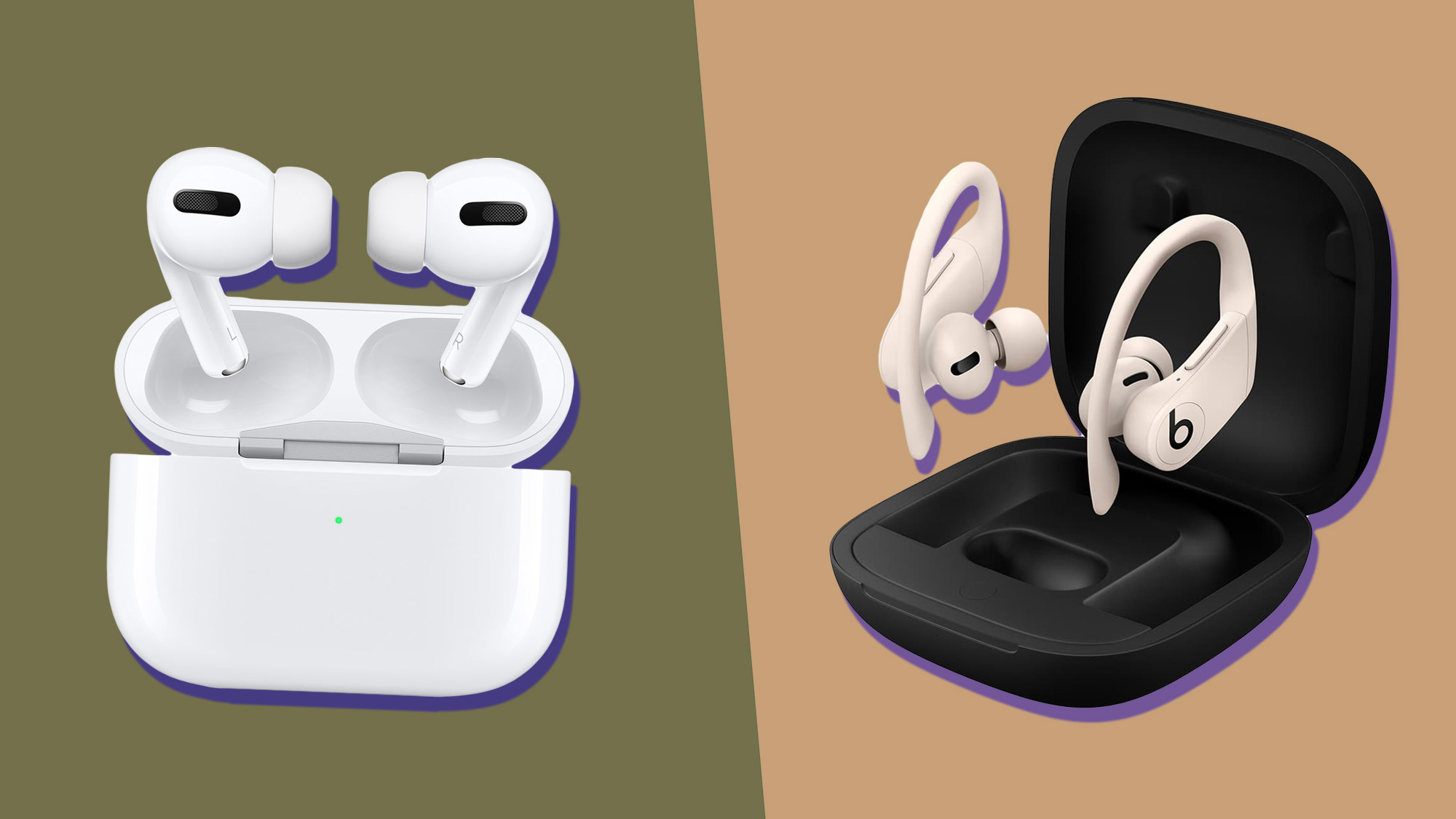
Beats Electronics, the company behind Beats headphones, has been a big player in the global audio market since it was first set up nearly 16 years ago. Fast-forward to 2014 and the company was acquired by Apple for $3 billion – and since then, it’s been going from strength to strength.
Last year, Beats and Apple launched the Beats Powerbeats Pro, a pair of true wireless earbuds created for working out. During our review, we found they’re supremely comfortable, sound decent, and seem to never, ever fall out. What else could you ask for from a pair of buds built for fitness?
Later in 2019, Apple unveiled the Apple AirPods Pro. These are, admittedly, a better pair of buds when it comes to audio smarts – thanks to new noise cancellation tech. But when it comes to a good pair of true wireless earbuds there’s much more to consider. So which pair of Apple-owned true wireless earbuds are truly the best?
As with most high-end headphones these days, the answer will be different for everyone depending on your lifestyle. That's why we’ve balanced the pros and cons of each pair of earbuds based on their most important factors, like sound performance and comfort. Read on to find out which pair of true wireless earbuds we think are right for you.
- Read our full AirPods Pro review
- Or, check out our Beats Powerbeats Pro review
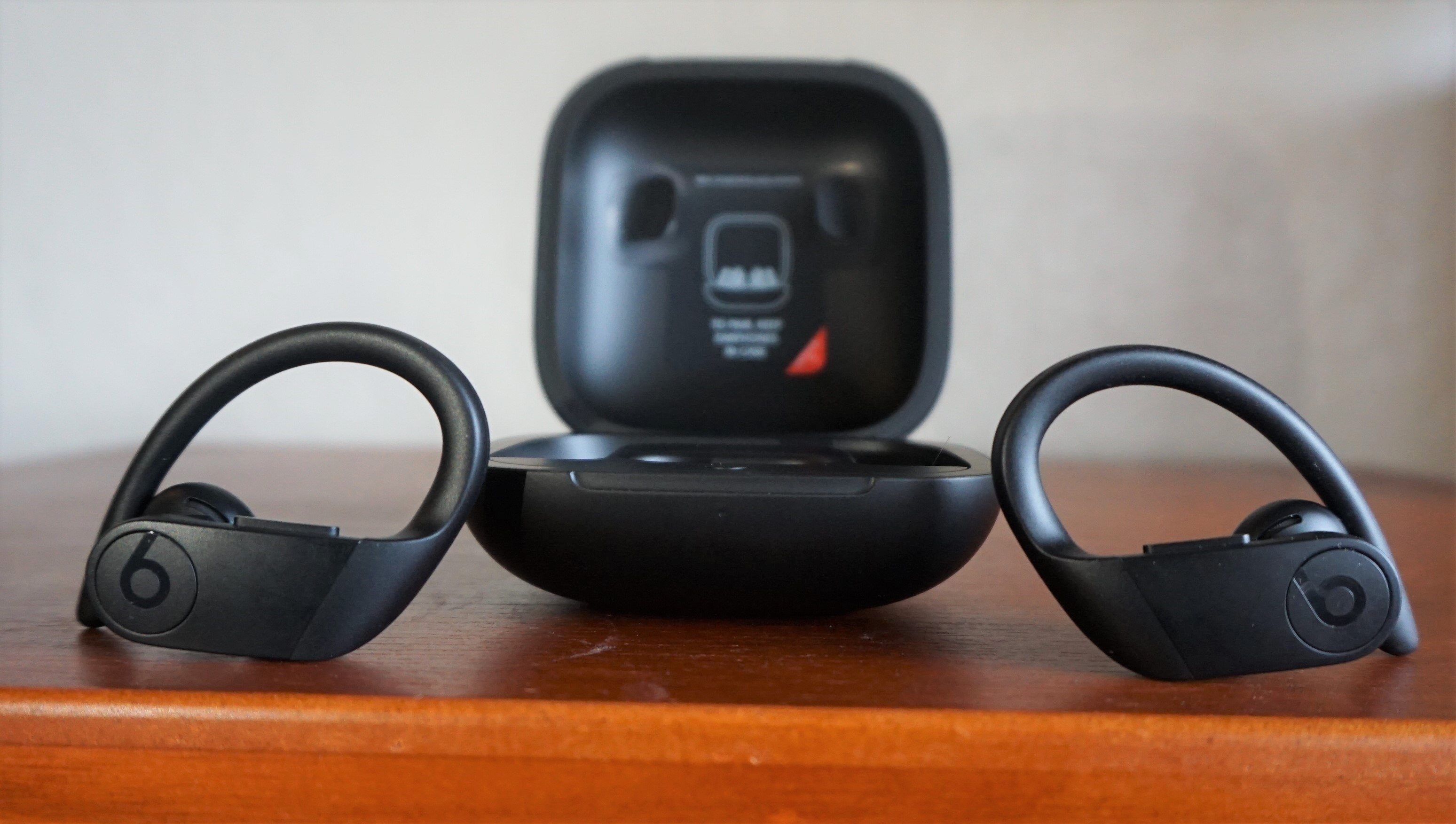
AirPods Pro vs Beats Powerbeats Pro: price
The Apple AirPods Pro true wireless earbuds cost $249 / £249 / AU$399. You might think this premium price tag makes sense for an Apple product, but there’s a significant price difference when you compare them to the 2019 AirPods, which cost $159 / £159 / AU$249 with the standard charging case, and $199 / £199 / AU$319 with the Wireless Charging Case.
As such, they’re not marketed as a direct replacement for the 2019 AirPods. When we compared the Apple AirPods Pro with the Apple AirPods we did find there’s a lot more on offer with the newer Pro model, including noise-cancellation and active EQ. For many that might justify the big price hike, for others, the advanced performance may still not be enough of a draw for that price.
Similarly, the Beats Powerbeats Pro cost $249 / £219 / AU$349. Unlike the AirPods Pro, you have four different colors to choose from, including Black, Ivory, Moss, and Navy – all of which come with a matching charging case.
Sign up for breaking news, reviews, opinion, top tech deals, and more.
The Powerbeats Pro are significantly more expensive than the previous iteration of these earbuds, the Powerbeats 3, which can usually be found online for under $100 / £100. But as we’ll learn later, what you're getting with the Powerbeats Pro is the significantly improved design, Apple's latest H1 Chip, and advanced sound quality.
As you can see, there’s no price difference between Apple’s two Pro true wireless earbuds in the US – and a marginal difference elsewhere.
AirPods Pro vs Beats Powerbeats Pro: design
How you feel about different earbud designs often comes down to personal preference and whether you want a bigger bud that might not be pretty but feels secure, or a minimal design that values style over sports credentials.
The Apple AirPods Pro are slim and minimal, but do have a distinct look when you have them in your ears, which has become synonymous with Apple. This is largely down to the stems, which stick out of your ear and point downwards. These stems are considerably smaller than the original AirPods, but they’re still obviously AirPods all the same.
The shorter stem may sound good if you were never keen on them in the original AirPods, but we found during testing it took some getting used to. That’s down to the fact there’s a ‘capacitive force sensor’ located in the stem. This is a small ridge on each of the AirPods Pro buds that you can squeeze to activate noise-cancelling / Transparency mode, or skip and pause tracks. What this means is that with a shorter stem, activating that sensor is a little more challenging – although we did find it became second nature after a few weeks of testing.
The Beats Powerbeats Pro look completely different to the AirPods. They have a design that’s become synonymous with sports-focused headphones – with a hook around the back of your ear – that still looks the part outside of the gym too. Of course, this makes sense given they’re marketed towards those who need a good pair of everyday headphones that are just as at home at the gym as they are the office.
On paper, we much prefer this look, but the one downside over the AirPods Pro is they jut out of the ears more – for some people this won’t be an issue, but it’s worth flagging up, especially if you like to wear earbuds to help you fall to sleep.
Like the AirPods Pro, there’s a control on the Powerbeats Pro themselves. On each, there’s a playback control button located where the Beats logo is, as well as a volume rocker, so you can control music with your hands.
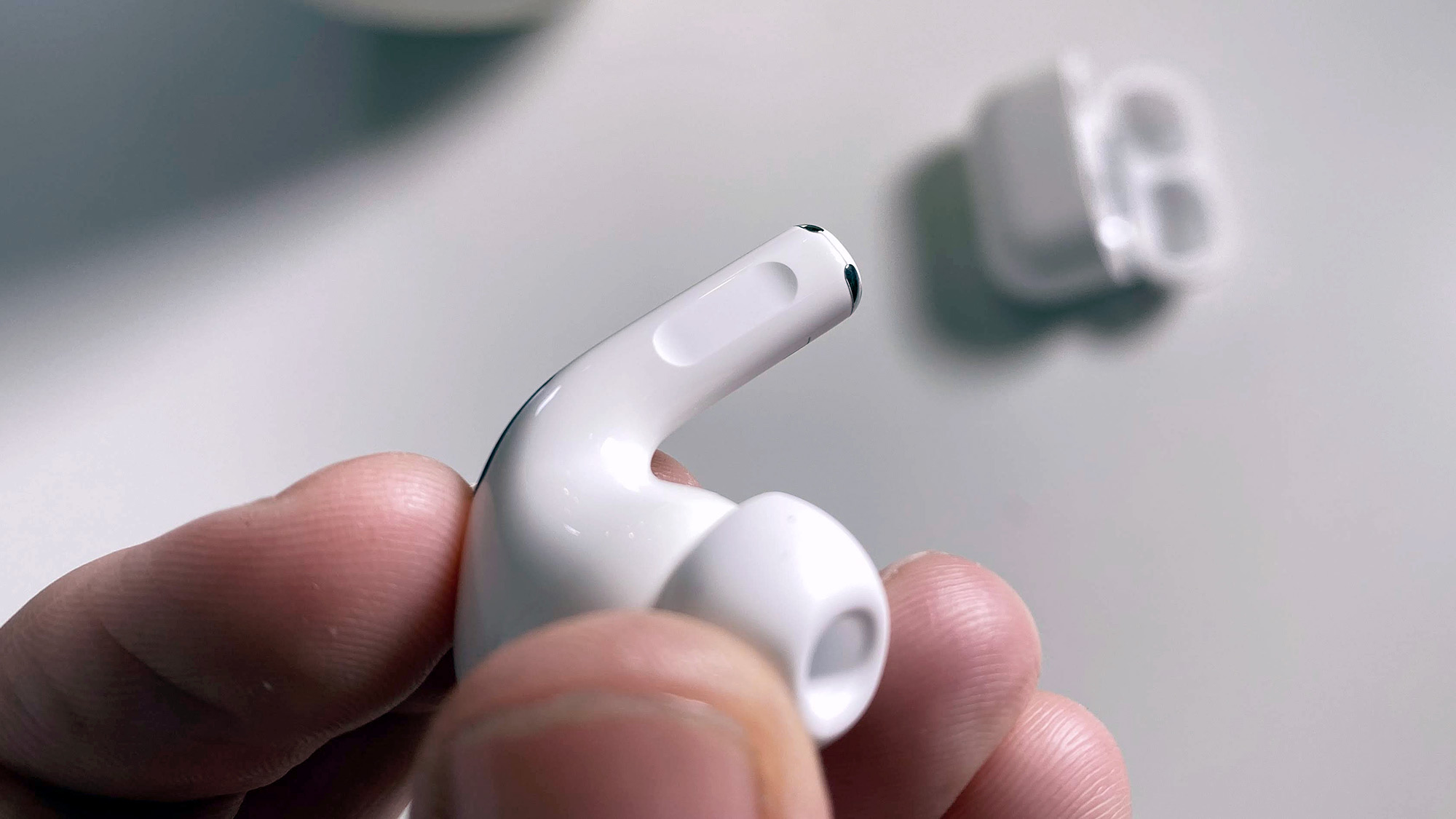
When it comes to comfort credentials, the Apple AirPods Pro have had an upgrade over the original AirPods. They now stay in place well and during our testing, we found they didn’t bounce around at all – even when we were jogging or running up a flight of stairs.
This fantastic fit is due to the customizable fit features. Apple offers three different-sized silicone tips and helps you to figure out which is best for you with a fit test within the app. This will make sure the buds don’t just fit well, but give you the best sound performance, too.
The only minor downside is that a lot of sweat can make the silicone tips slide about a little more than we’d have liked. But, crucially, they didn’t fall out, even while running. They’re also very light, which sounds like a big pro, but could be a problem if one of them ever did fall out. We couldn’t guarantee we’d notice straight away.

We also found the Beats Powerbeats Pro to be extremely comfortable during testing. What we mean by that isn’t just that the design around the ear fit snugly, but the whole experience while listening to music was great too.
When we’ve tested some true wireless earbuds in the past we’ve found there’s a slight in-ear pressure when listening to music. It’s not unpleasant, but not ideal. It’s something we felt while listening to other workout earbuds, like the Jaybird X4. However, that odd pressure is nowhere to be found with the Powerbeats Pro. This is deliberate and due to a micro-laser barometric venting hold located in the front chamber that Apple says reduces pressure in the ear and improves bass response.
Like the Apple AirPods Pro, there’s also a choice of different-sized earbud nozzles, which contribute to the excellent fit of the Powerbeats Pro. Combine that with the added hook design and you’ve got one very comfortable listening experience.
It’s also worth mentioning here that both earbuds have been designed with IPX4 sweat and water resistance, which means they’re good for 10 minutes of water or sweat splashing.

AirPods Pro vs Beats Powerbeats Pro: battery life
Battery life is a key factor when it comes to finding the right true wireless earbuds for you. There’s no point going fully wireless if the battery is poor and you have to plug them in to charge them often, after all.
During our testing, the AirPods Pro lasted 4.5 hours with noise-cancelling on and around five without it. The AirPods Pro’s charging case will then give you over 24 hours of listening time when fully charged and it also has a fast-charging mode.
In comparison, the Beats Powerbeats Pro offer a huge eight to nine hours of battery life. That’s obviously much better than the AirPods Pro, but there’s no active noise cancellation here, which explains some of that big difference.
The Powerbeats Pro charging case also provides 24 hours of listening time and comes with a fast-charging mode, so they’re on par in that respect – although the Powerbeats Pro charging case is very big, which makes it a little awkward to carry around.
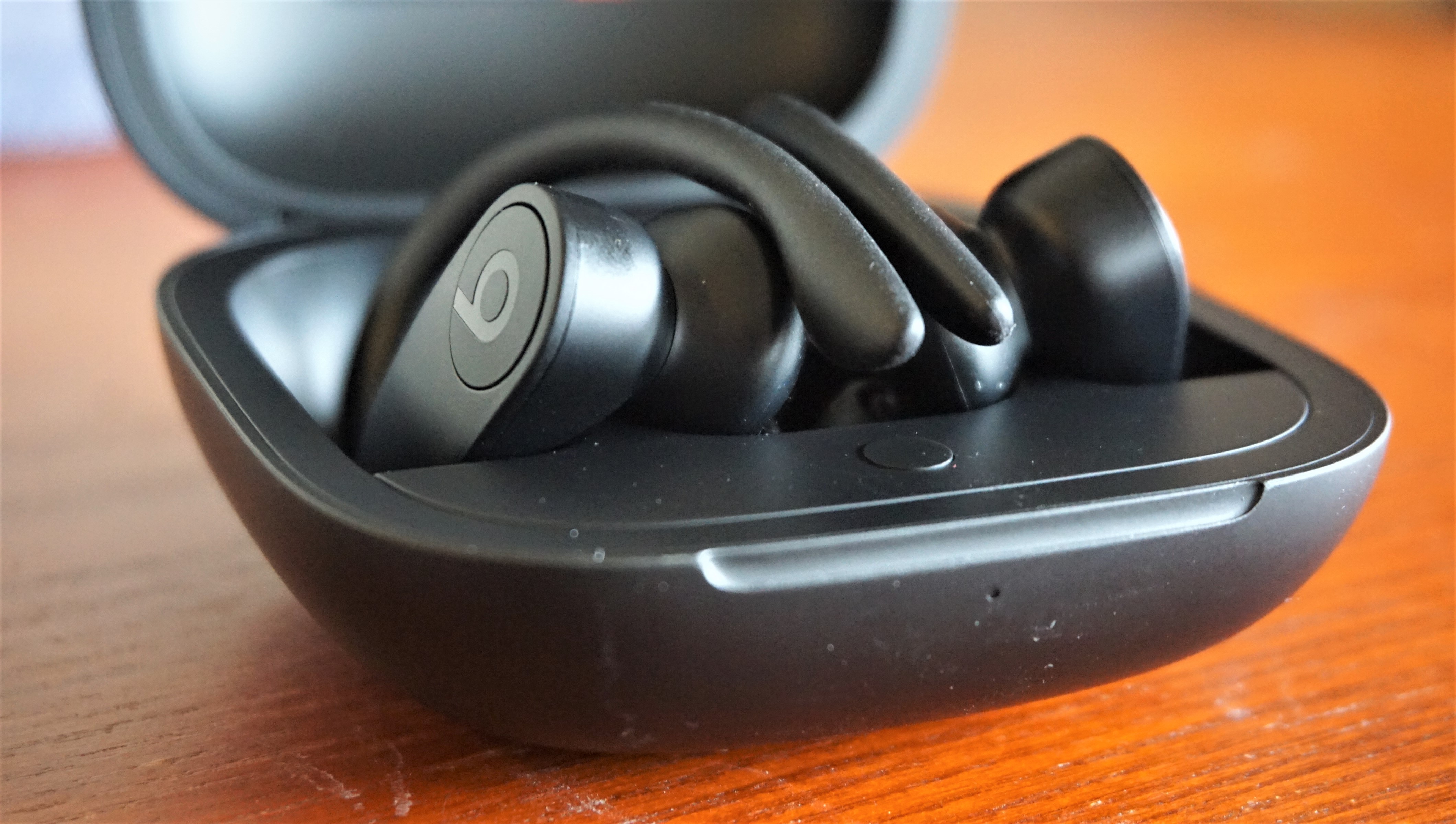
AirPods Pro vs Beats Powerbeats Pro: performance
The biggest difference between the two true wireless earbud models is noise cancellation. The AirPods Pro are the first headphones from Apple with active noise cancellation tech built-in.
During testing of the AirPods Pro, we found that when active noise cancellation is on, there’s a strong and noticeable effect. However, it won’t completely shut out every sound around you. For example, if you’re in an office and there’s loud music playing, a bit of it might bleed through.
Having said that, just walking down the street with them in your ears will shut off most noises, including cars and motorbikes. Constant noise, like a fan or the wind (the type that can be particularly annoying), is shut off well, too. We also found they worked well on a train, making a huge difference when this mode was turned on and off.
Handily, the AirPods Pro also offer Transparency mode, allowing you to listen to music and hear what’s going on around you if you need to be a little more aware.
What’s important to note here is that although the Powerbeats Pro do not have noise cancellation, the very snug fit of the design – with the hook around your ear and comfortable in-ear nozzles – can give you a certain level of passive noise cancellation by physically blocking out sound. However, the AirPods Pro quite obviously win when it comes to drowning out outside noises and providing an immersive listening experience.
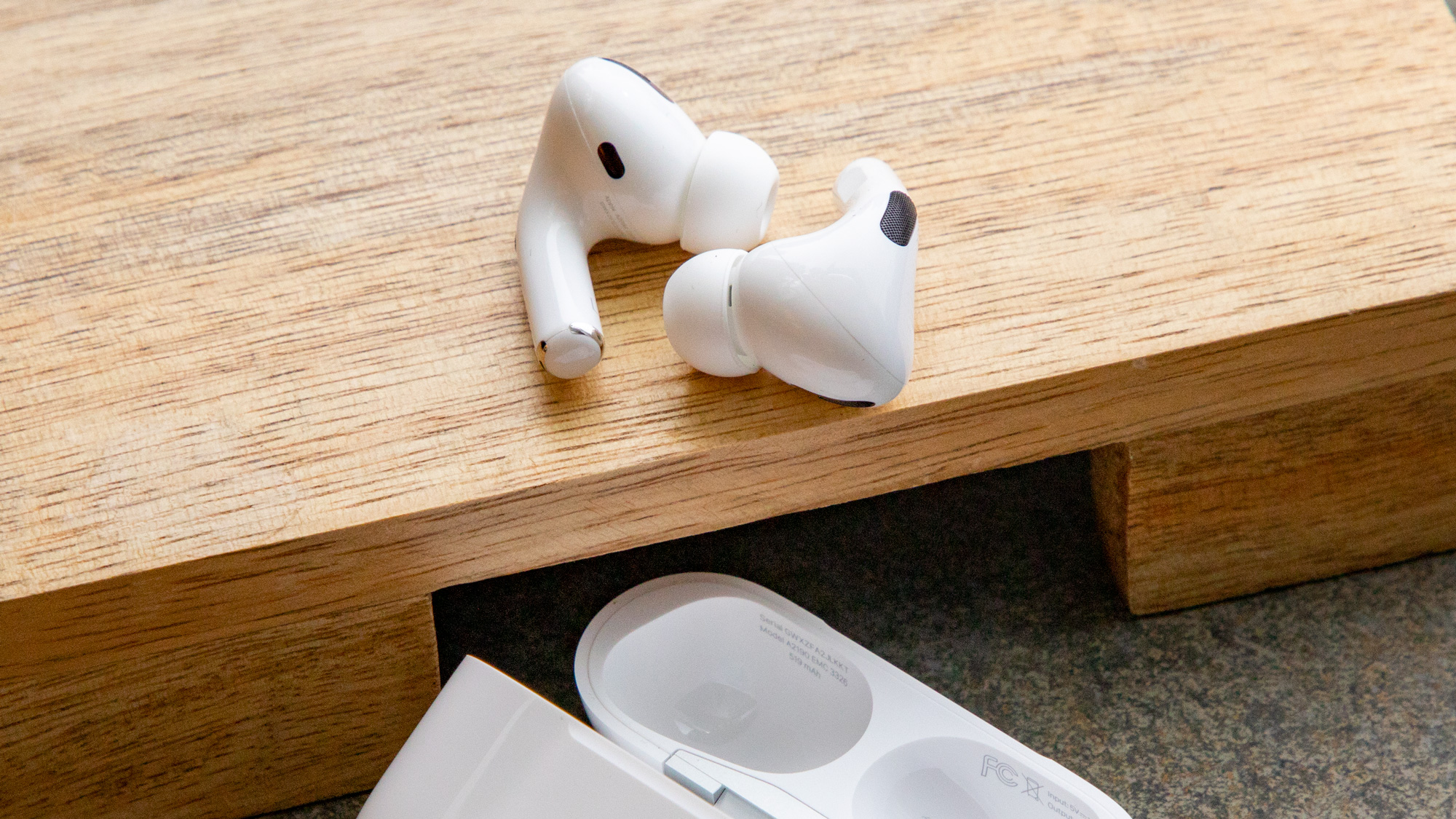
When it comes to general sound performance, Apple has provided custom drivers, improved bass and an adaptive equalizer within the AirPods Pro. During our testing, we found this meant vocals often sounded really rich and the bass, in particular, was more powerful than the original AirPods.
We had a similar experience across all kinds of music, including acoustic, indie rock, electro, pop, and hip-hop – but equally across these genres, the separation between high mid and low was only average. One thing to note is there’s still a feeling that the sound is 'closed off'. What we mean by that is it sounds as though the music is coming from inside your head; high-quality headphones tend to make it sound as if the sound is coming at you from all angles instead.
Some other true wireless earbuds performed better when it comes to hearing the details in the music than the AirPods Pro, like the Sony WF-1000XM3 for example. Similarly, classic music sounded a little dull, but pop music always came through clearly with rich and balanced mid-frequencies.
During our testing of the Powerbeats Pro, we found that, as you’d expect, the Beats brand still caters to EDM, R&B and rap, and can now play most crunchy rock and alternative with some authority.
Surprisingly, the Powerbeats Pro have really turned down the bass this time around. Although they’re not quite at a flat EQ, it’s more like a gentle v-shape that boosts the highs and lows with a slight recess on the mids. It’s a smooth curve so that music sounds reasonably energetic, but not too slanted that movies and shows are unwatchable. We found that even movies like Thor Raganarok sounded absolutely fine with them.
Although it’s worth mentioning that this might be subjective. Our preferences for an EQ curve aren’t going to be to everyone’s tastes – and there are no tools here to alter the sound. This is bound to be frustrating if you don’t feel like you’re hearing enough mids when you’re watching a movie or if you feel like your music is missing some sparkle in the upper register.
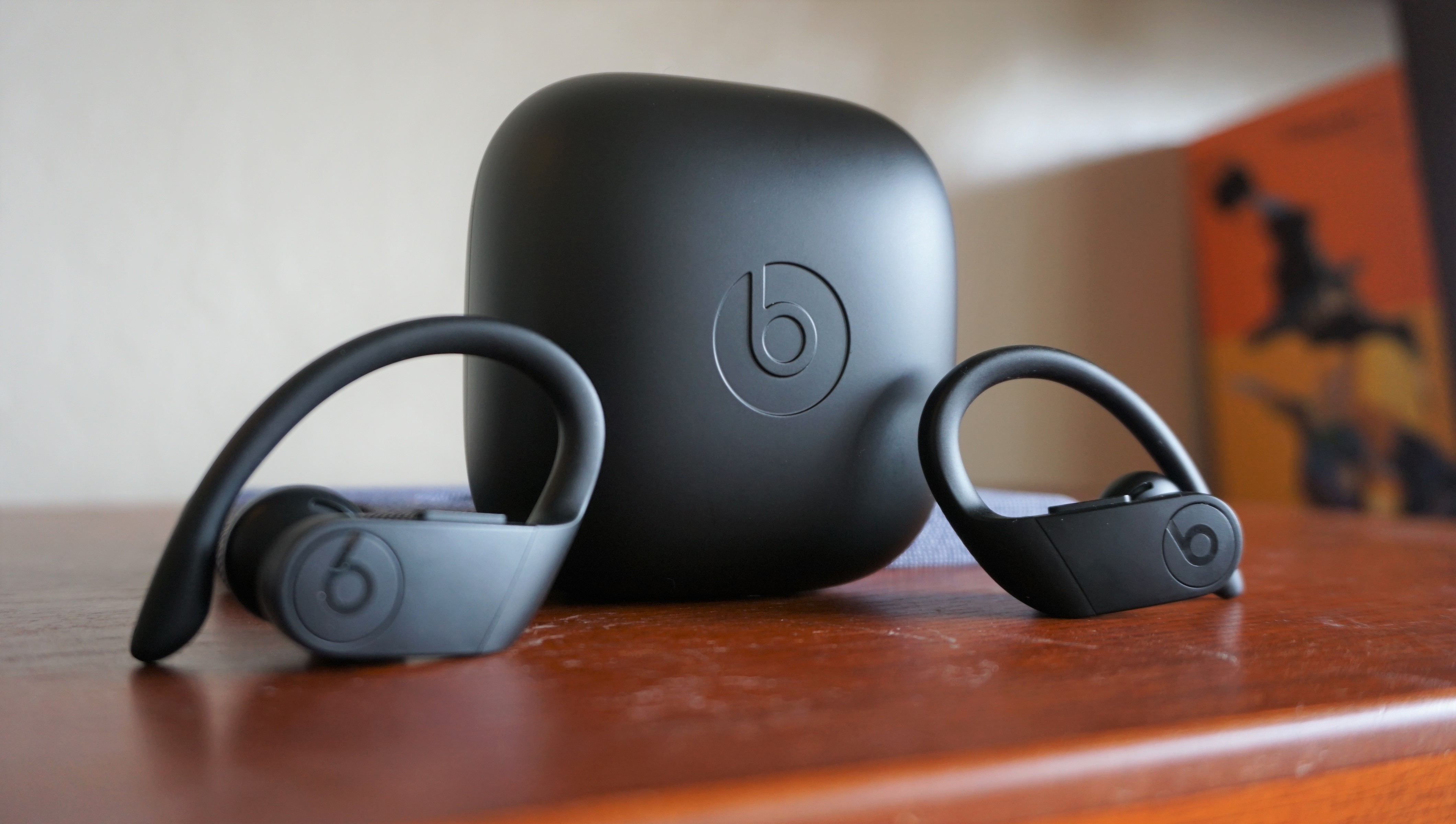
Although they offered a good listening experience that blocked out some environmental noise, it wasn’t always a good experience listening to the Powerbeats Pro on busy public transport or in a loud office. With that in mind, we found they performed their best in quieter environments, like at home, in a calm office or at the gym.
Because you can use hands-free Siri, they’re great for setting timers in between sets and placing calls to friends and clients. Whether you choose the AirPods Pro or Powerbeats Pro may come down to something as sensible as where you’ll be using your earbuds the most.
Both true wireless earbuds feature Apple’s H1 chip. This means you get features including Audio Sharing, Announce Messages with Siri, and Hey Siri with each of them. However, one additional feature it’s worth mentioning here is that the AirPods Pro send exact volume levels to your iPhone so you can see if you’re listening to things too loudly. It’s a small but significant step in hearing health that could win some people over.
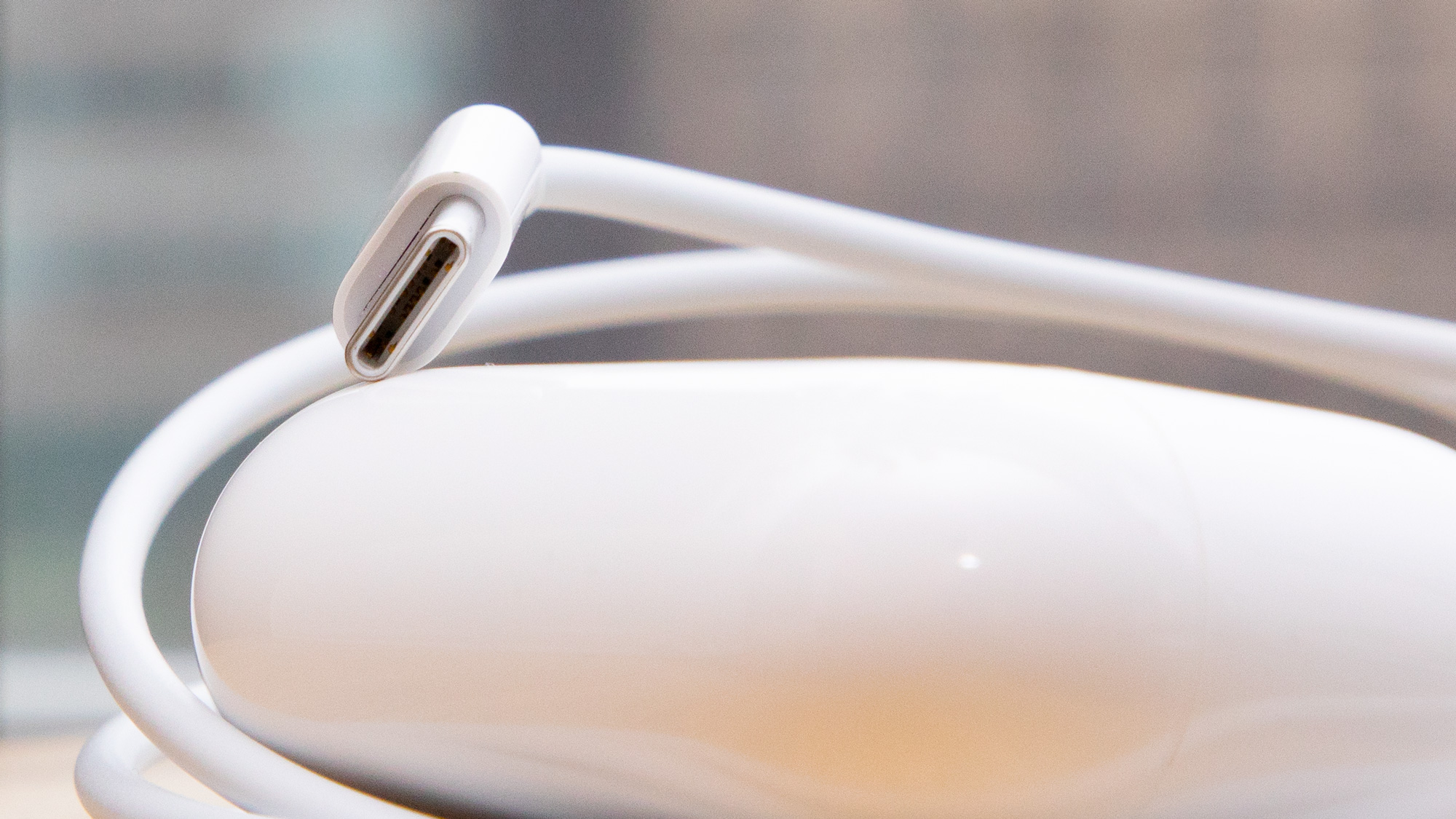
AirPods Pro vs Beats Powerbeats Pro: takeaway
Whether you buy the AirPods Pro or the Beats Powerbeats Pro will all depend on what you’re looking for. After all, they’re the same price in some regions.
If you’re active and want a pair of headphones that’ll do for the commute and the gym, you’d probably be best opting for the Powerbeats Pro. They fit better thanks to the around-ear hook and snug nozzles. What’s more, the (nearly) nine hours of battery is also hugely appealing if you’re active and won’t get a chance to stop and charge – unless you want to carry that huge case around with you.
On the other hand, if you want the best sound performance with the latest noise cancellation tech and Transparency mode you need the AirPods Pro. They’re also a good option if you prefer something a little more compact too, both in your ear and to carry around thanks to the smaller charging case.
If you’ve not been sure about AirPods in the past, the Pro design might win you over. Those big stems are smaller, audio performance is better, and fit has been hugely improved.
You can’t go wrong with either of these true wireless earbuds and at the end of the day it’ll come down to what your day-to-day activities look like, whether you need the latest noise-cancelling tech or maybe that you just prefer the design of one over the other.

Becca is a contributor to TechRadar, a freelance journalist and author. She’s been writing about consumer tech and popular science for more than ten years, covering all kinds of topics, including why robots have eyes and whether we’ll experience the overview effect one day. She’s particularly interested in VR/AR, wearables, digital health, space tech and chatting to experts and academics about the future. She’s contributed to TechRadar, T3, Wired, New Scientist, The Guardian, Inverse and many more. Her first book, Screen Time, came out in January 2021 with Bonnier Books. She loves science-fiction, brutalist architecture, and spending too much time floating through space in virtual reality.